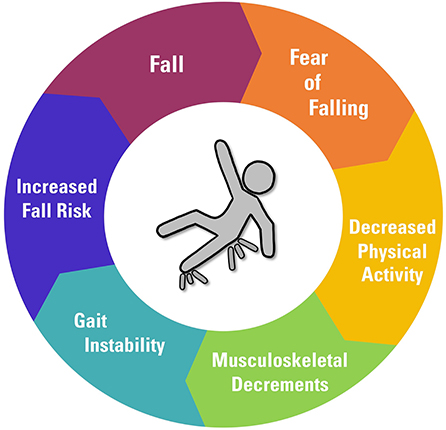The Facts About Dementia Fall Risk Uncovered
How Dementia Fall Risk can Save You Time, Stress, and Money.
Table of ContentsAll about Dementia Fall RiskThe Only Guide for Dementia Fall Risk10 Simple Techniques For Dementia Fall RiskDementia Fall Risk Things To Know Before You Get This
A fall threat evaluation checks to see exactly how likely it is that you will certainly fall. The assessment usually consists of: This includes a collection of concerns about your overall health and if you have actually had previous falls or problems with equilibrium, standing, and/or strolling.Interventions are referrals that may decrease your threat of falling. STEADI includes 3 actions: you for your risk of falling for your danger elements that can be improved to try to prevent falls (for example, balance issues, damaged vision) to lower your threat of dropping by using efficient strategies (for example, supplying education and learning and sources), you may be asked several questions including: Have you fallen in the past year? Are you fretted regarding dropping?
Then you'll rest down once again. Your service provider will inspect how much time it takes you to do this. If it takes you 12 seconds or more, it may imply you are at higher risk for a fall. This test checks strength and balance. You'll sit in a chair with your arms crossed over your chest.
The placements will get tougher as you go. Stand with your feet side-by-side. Relocate one foot halfway forward, so the instep is touching the big toe of your various other foot. Relocate one foot completely in front of the other, so the toes are touching the heel of your other foot.
See This Report on Dementia Fall Risk
A lot of falls take place as a result of numerous contributing variables; as a result, managing the danger of falling starts with determining the elements that add to drop danger - Dementia Fall Risk. Some of one of the most relevant danger variables include: History of previous fallsChronic clinical conditionsAcute illnessImpaired stride and equilibrium, lower extremity weaknessCognitive impairmentChanges in visionCertain high-risk medicines and polypharmacyEnvironmental variables can also increase the threat for drops, consisting of: Inadequate lightingUneven or damaged flooringWet or slippery floorsMissing or harmed hand rails and order barsDamaged or improperly fitted devices, such as beds, mobility devices, or walkersImproper use of assistive devicesInadequate guidance of individuals living in the NF, including those that exhibit aggressive behaviorsA effective fall danger management program calls for a thorough clinical analysis, with input from all members of the interdisciplinary group

The treatment strategy ought to likewise include interventions that are system-based, such as those that promote a risk-free atmosphere (proper illumination, hand rails, get hold of bars, and so on). The performance of the treatments need to be reviewed occasionally, and the treatment strategy modified as required to show modifications in the autumn danger evaluation. Carrying out a loss threat monitoring system using evidence-based best method can lower the prevalence of falls in the NF, while limiting the capacity for fall-related injuries.
Dementia Fall Risk Things To Know Before You Get This
The AGS/BGS standard recommends evaluating all adults matured 65 years and older for autumn risk annually. This testing is composed of asking clients whether they have fallen 2 or even more times in the past year or sought clinical interest for a loss, or, if they have actually not fallen, whether they feel unsteady when strolling.
Individuals that have dropped once without injury needs to have their balance and stride examined; those with gait or equilibrium abnormalities should receive added assessment. A background of 1 fall without injury and without stride or equilibrium problems does not necessitate further evaluation past continued annual loss risk screening. Dementia Fall Risk. A loss risk evaluation is called for as part of the Welcome to Medicare assessment

The Main Principles Of Dementia Fall Risk
Documenting a falls background is one of the top quality signs for fall prevention and management. copyright drugs in specific are independent predictors of drops.
Postural hypotension can frequently be reduced by decreasing the dosage of blood pressurelowering drugs and/or quiting medications that have orthostatic hypotension as an adverse effects. Use above-the-knee assistance tube and resting with the head of the bed elevated might likewise decrease postural decreases in blood stress. The suggested elements of a fall-focused physical exam are received Box 1.

A Pull time better than or equivalent to 12 seconds suggests high autumn danger. Being incapable to stand up from a chair of knee elevation link without using one's arms suggests boosted loss risk.